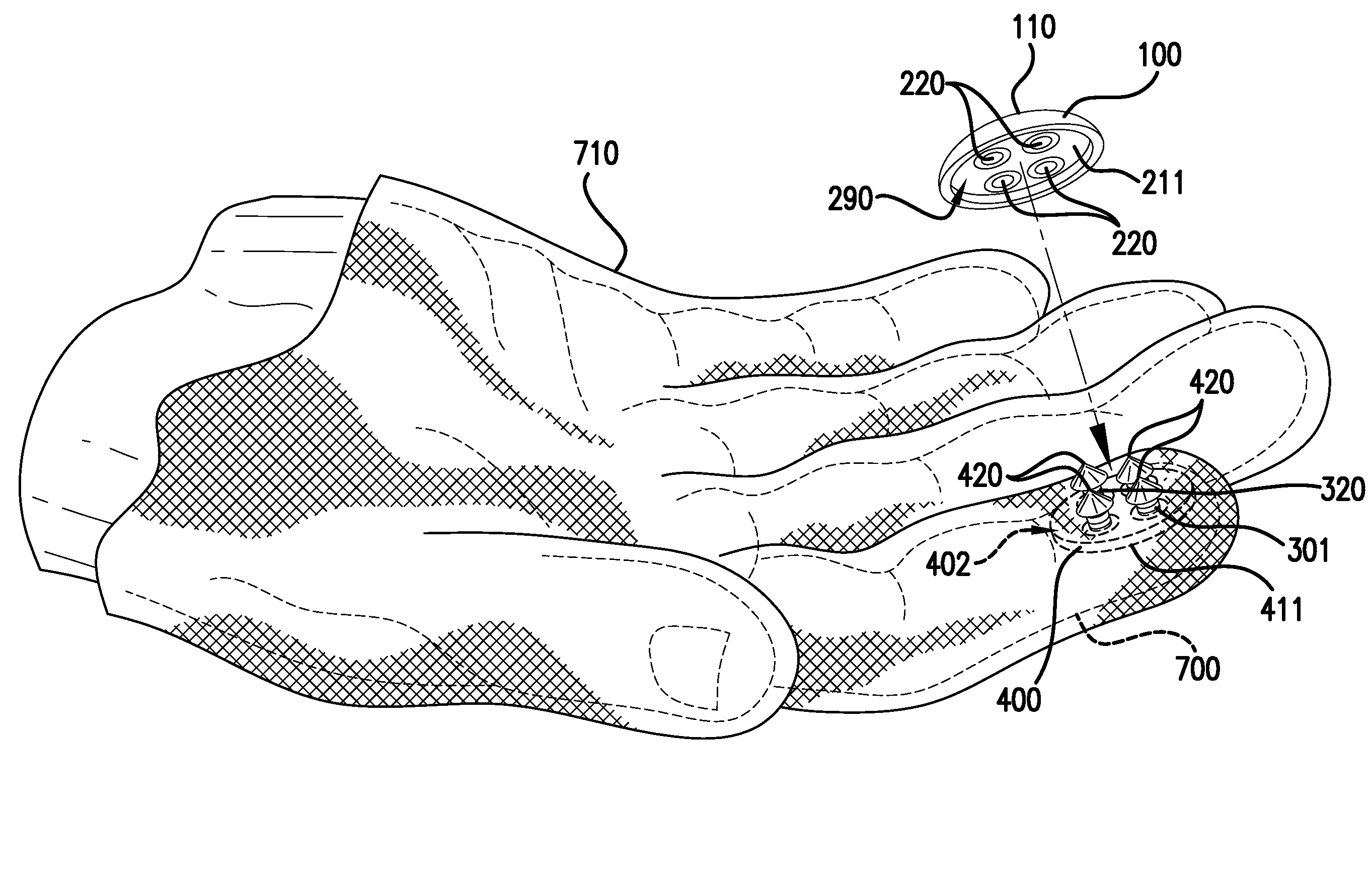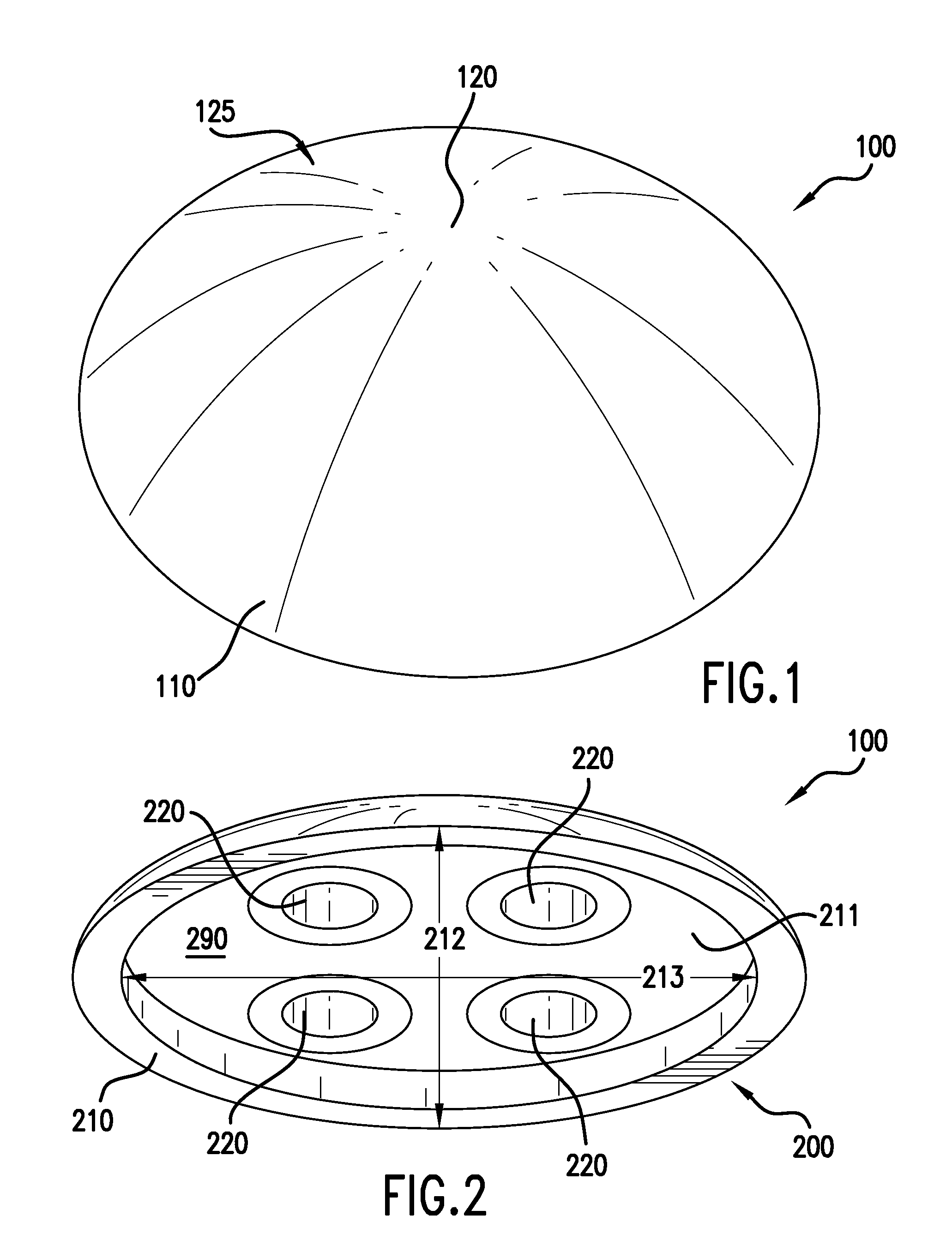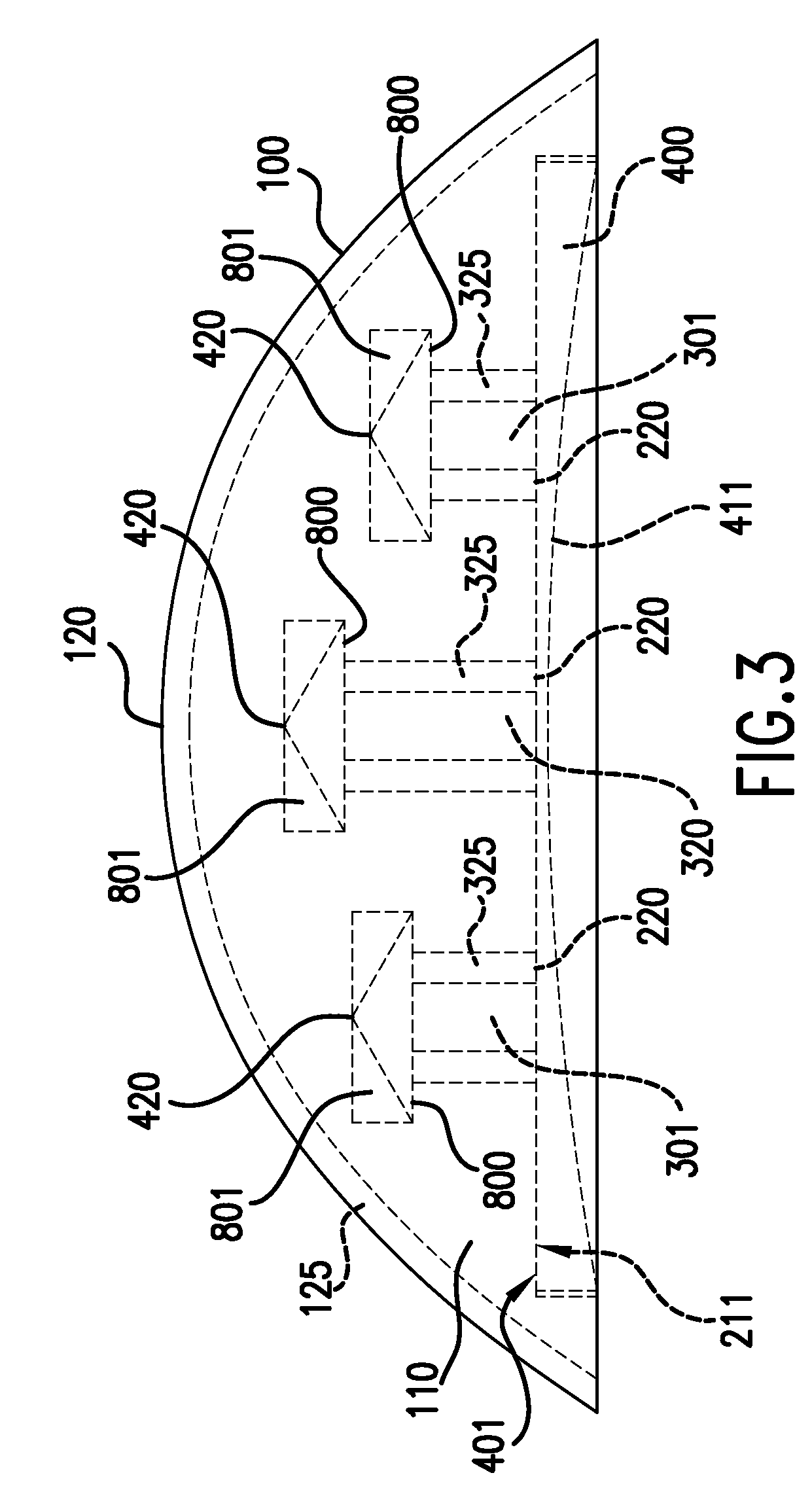Conductive cap
a technology of conductive caps and caps, applied in the field of conductive caps, can solve the problems of user fatigue, fingernails not working with capacitive touch screens, and users prone to drop and break their phones more,
- Summary
- Abstract
- Description
- Claims
- Application Information
AI Technical Summary
Benefits of technology
Problems solved by technology
Method used
Image
Examples
Embodiment Construction
[0019]FIG. 1 is a perspective view of the cap 100. The cap 100 is made of a conductive material having a front cap side 110 that is convex towards a point on the surface of the front side of the cap 120. The cap may be of varying shapes, sizes, dimensions, and thickness while it will remain convex towards one point on the surface of the front side of the cap (i.e. oval, teardrop, heart, star, flower, etc.)
[0020]The convex shape of the cap aids in the user accurately touching a single key or button on an electrical device. The cap is shaped such that the user can avoid mistakenly touching multiple keys when their intentions are to touch a single key or button. The cap diameter is approximately ⅛ cm to 1 cm. The cap may be larger or smaller depending on the size of the user's digit or the size of the keys on the electrical device. The front cap side 110 features an enamel layer 125 on the front cap side 110 to prevent damage to an electrical device touch screen. The enamel layer 125 i...
PUM
 Login to View More
Login to View More Abstract
Description
Claims
Application Information
 Login to View More
Login to View More - R&D
- Intellectual Property
- Life Sciences
- Materials
- Tech Scout
- Unparalleled Data Quality
- Higher Quality Content
- 60% Fewer Hallucinations
Browse by: Latest US Patents, China's latest patents, Technical Efficacy Thesaurus, Application Domain, Technology Topic, Popular Technical Reports.
© 2025 PatSnap. All rights reserved.Legal|Privacy policy|Modern Slavery Act Transparency Statement|Sitemap|About US| Contact US: help@patsnap.com



